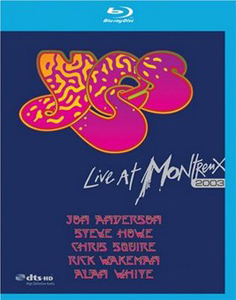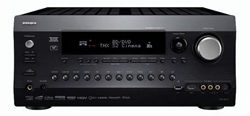Introduction to the Integra DTR 50.3 THX Select2 Plus Receiver
Integra, the high-end brand of Onkyo, has a reputation for consistently making quality receivers and processors. I’ve reviewed several Integra receivers, and have always been impressed by the way the company manages to keep up with the latest trends and technology without sacrificing the core values of high performance audio and video reproduction.
INTEGRA DTR 50.3 THX SELECT2 PLUS RECEIVER SPECIFICATIONS
- Design: 7.2 channel A/V receiver
- Power: 135 watts RMS @ 8 ohms 20Hz-20kHz FTC (0.08%)
- Codecs: Dolby True HD; DTS Master Audio; Dolby ProLogicIIz; THX Processing
- DAC’s: Burr-Brown PCM 1690 24-Bit DAC’s
- Dimensions: 13.25″ H x 17.1″ W x 21,75″ D
- Weight: 39.5 Pounds
- MSRP: $1,400 USD
- Integra
- SECRETS Tags: 7.2, Receivers, Integra
Integra’s current receivers includes an entry-level 5.2 receiver, three 7.2 receivers, and two 9.2 channel receivers. The subject of this review, the DTR 50.3, is at the top of Integra’s 7.2 channel line-up. Given my past experience with Integra receivers, I had pretty high expectations for the DTR 50.3.
Design of the Integra DTR 50.3 THX Select2 Plus Receiver
The DTR 50.3 has the familiar Integra look, with a long row of black input selector buttons along the bottom of the faceplate, flanked by a large silver volume button on the right and smaller silver power switch on the front of the unit.
The Integra is powered by a seven-channel amp rated at 135 watts per channel to all channels at full bandwidth (20Hz -20kHz) at 0.08% THD at 8 ohms per FTC power ratings. The DTR 50.3 does not use a toroidal transformer (only the top-of-the-line 80.3 receiver has one). The seven channels of amp power can be used to power a 7.1 surround system. Alternatively, two of the amp channels can be used to power a Zone 2 set of speakers, a set of Audyssey DSX Front High or Wide channels, or to bi-amp the front left and right speakers.
Speaking of Audyssey, the DTR 50.3 uses the MultEQ XT version of the software (the much heralded MultEQ XT32 is available on the next model up in the Integra line, the DTR 70.3). I’ve never had really been satisfied with the results of room correction software in my listening room (other than low frequency/subwoofer adjustment); however, that is due primarily to the peculiarities of my room rather than problems the software. Processing in the DTR 50.3 is handled Burr-Brown PCM 1690 24-Bit DAC’s, along with a separate 32-Bit DSP chip for advanced processing chores. The DTR 50.3 has all of the latest processing modes one would expect in a high-end Integra product, along with THX processing modes and Loudness Plus.
On the video side, the DTR 50.3 is 3-D compatible via its HDMI v.1.4a. Video processing is furnished by the HQV Vida chipset, along with 4K upscaling by a Marvell Kyoto G2H chip (assuming you’re one of the lucky few with a 4K capable display). The Integra is a network receiver, optimized for streaming music apps such as Pandora, Slacker, Spotify, along with SiriusXM iRadio. The DTR 50.3 is not Wi-Fi enabled; it requires either a wired Ethernet connection or external WiFi adapter to use the networked services. Integra supplied a USB-based WiFi adapter (UFW-1, MSRP $39), which plugs into the USB port on the front of the receiver. The USB jack also worked seamlessly with various flash drives, as well as my iPhone.
The back of the DTR 50.3 has seven HDMI inputs, which should be plenty for just about any situation, along with two HDMI outputs. You can send a signal to both HDMI outputs simultaneously, but the manual warns that if the two displays have different output resolutions, video signals may not be output from both HDMI Out Main and HDMI Out Sub at the same time. The Integra has three component video inputs, along with legacy S-Video and even composite video inputs. The DTR 50.3 also has five sets of analog audio input jacks, and a phono jack. Three coaxial digital and two digital optical inputs are included as well. Some of our prior measurements on products have shown significantly more jitter on digital audio signals when passed through HDMI (as opposed to S/PDIF digital audio), so I typically run a S/PDIF cable from my trusty Oppo DV
-980H player to one of the digital inputs of the receiver when playing Redbook CD’s. Speaker binding posts are thoughtfully spaced across the bottom of the back panel, rather than crammed into a small block as on some other products.
The DTR 50.3 will fit in a standard equipment rack, and at 39.5 pounds is a solid but not unbearably heavy piece of equipment.
The Integra DTR 50.3 THX Select2 Plus Receiver Setup
Getting the DTR 50.3 read to go is a pretty painless process. The supplied Audyssey microphone and set-up procedure automatically detects what speakers are connected to the system, calculates speaker distance and cross-over point (although it set my center channel speaker at 90 Hz rather than the preferred 80 Hz), then allows you to move the microphone around the room so that the software calculates the best overall sound for the entire room. As usual in my room, I preferred to turn the processing off. There is a bit of manual selection involved in assigning the various digital and HDMI sources to the various inputs, as well as selecting default audio codec’s for each input. The on-screen display makes this a fairly easy procedure. I left all the video processing set at default values.
Setting up the network services was the same process as adding any other device to a home network. The Integra automatically detected my WiFi network, asked for my network password, then made the connection without a hiccup. The set-up screen then shows the various network services icons. I primarily use Pandora (actually Pandora One with its slightly higher bitrate), so once selected I then entered my Pandora account name and password, and in seconds was listening to my favorite stations. Pretty neat.
But what I really wanted to know was, how would it sound?
The Integra DTR 50.3 THX Select2 Plus Receiver In Use
I used the five amp channels of the DTR 50.3 to drive my five-channel speaker system, and hooked up the other two channels to Zone 2, where they drove a pair of Paradigm outdoor speakers. Later in the review period, I connected the pre-outs of the Integra’s left, right and center-channels to the unbalanced inputs of my Emotiva XPA-3 amplifier using single-ended cables (the Integra does not have XLR pre-out jacks), leaving the Integra to power the left and right surround speakers.
All of the prior Integra receivers I’ve reviewed generated significant heat from the top panel, to the point that on some products it was uncomfortable to leave a hand there. However, the DTR 50.3 ran significantly cooler than prior models. The top panel never felt more than slightly warm to the touch.
While it is easy to note the difference in heat signature of the DTR 50.3 to prior Integra receivers, it’s impossible to draw direct comparisons to the sound of other Integra products I’ve reviewed in the past, given the passage of time. Nonetheless, my experience is that Integra products have a particular sound, by which I mean they don’t sound like anything. They simply reproduce the source material without adding its own character or coloration. I’ve certainly heard more detailed sound in products costing several times the $1,400 list price of the DTR 50.3, but unless you’re used to that level of performance, you wouldn’t know you’re missing anything with the Integra.

Roxy Music’s Avalon (SACD) is a time machine back to the 80’s, complete with the dense, lush arrangements that were typical of the era. The title track has multi-layered keyboards and guitars drenched in echo, with Bryan Ferry’s voice seemingly floating above the mix. The Integra did a fine job of separating the various instruments and vocals, without reducing the track to a mish-mosh of sounds as I’ve heard on lesser systems.

Speaking of time machines, the Blu-ray of Yes Live at Montreux 2003 offers a glimpse back into the prog rock giants’ set list from their peak in the 1970’s, but with 21st century audio quality. The Integra really brought the concert to life, with all the dynamic contrasts and power that come with a fine Yes performance.

Thor was a perfectly silly film that didn’t take itself too seriously, but was a real treat for the eyes and ears. Again, the DTR 50.3 created an immersive, theater-like experience, with all manner of mayhem bouncing throughout the soundstage.
As previously mentioned, later in the review period I used my Emotiva amp to power the front three channels. Although my past experiences have produced dramatic differences, I was surprised how subtle the changes were in substituting a dedicated amp capable of 200 watts per channel, for the Integra’s own internal amplifier. There was a little more air and clarity in the mid to upper frequencies when using the Emotiva, but not a huge world of difference.
Conclusions about the Integra DTR 50.3 THX Select2 Plus Receiver
Once again, Integra has produced a high-quality, high value product in the DTR 50.3 receiver. It has all the bells and whistles you could ask for in a modern receiver, but still has that clean, neutral Integra sound. Definitely recommended!




